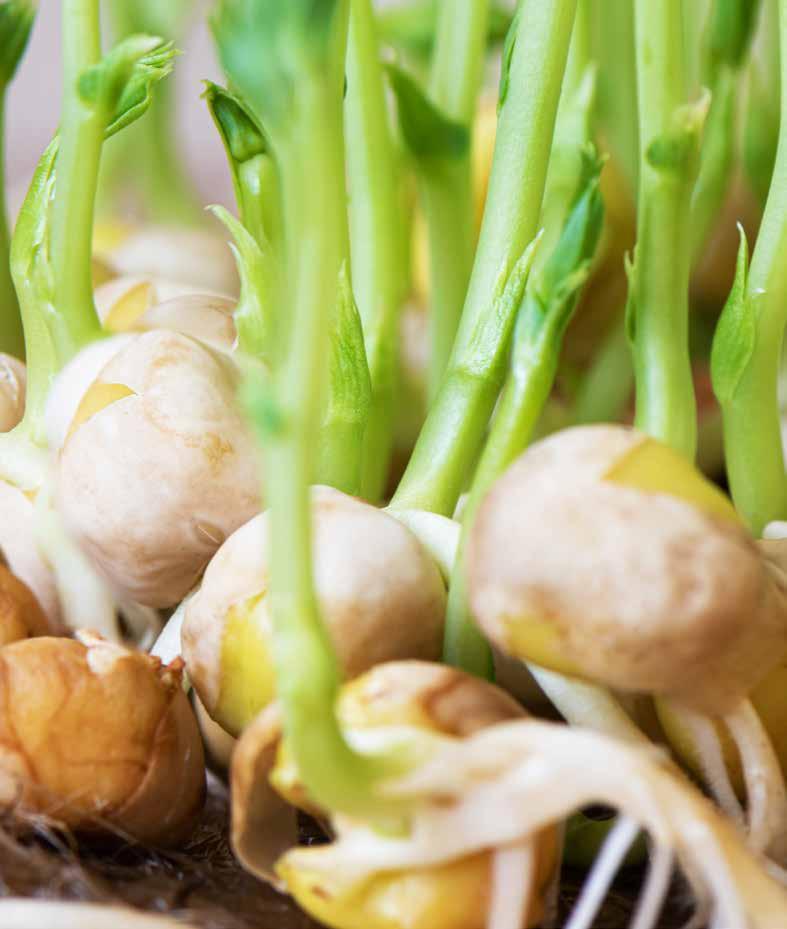
3 minute read
more on hydroponics
HYDROPONICS: THE FUTURE OF FARMING?
IT’S KNOWN AS NEXTGENERATION FARMING, WHICH USES UP TO 90% LESS WATER THAN CONVENTIONAL FARMING METHODS, MAKING IT SO MUCH MORE SUSTAINABLE. HERE’S EVERYTHING YOU NEED TO KNOW.
Advertisement
By: Zakiyah Ebrahim
Hydroponic farming refers to growing plants without soil and providing their nutrients directly through water - referred to as ‘nutrient-rich water’. No fertiliser or chemicals are needed. From Greek, it translates to ‘working water’ – hydro meaning water, and ponos meaning labour. The first evidence of hydroponic cultivation stretches back to over two thousand years, but it has advanced so much in the last century that even NASA has considered using hydroponics as a potential food source for astronauts on Mars!
HOW IT WORKS
This technique combines a growing medium (which is substituted for the soil), water and added nutrients. Some of the commonly-used mediums are rockwool, sawdust, clay pellets and coconut fibre.
There are several unique hydroponic systems that farmers and gardeners adopt worldwide, including the Deep Water Culture, Ebb and Flow, Aeroponics and Drip systems. However, the common feature all of them share is that they produce crops without using soil, but rather using three main ingredients: nutrients, water and oxygen.
The growing medium provides oxygen to the roots, puts the roots and dissolved nutrients in contact with the water, and anchors the plants so that they don’t fall over.
EVERYTHING ELSE YOU NEED TO KNOW
This method of farming is the healthier option, uses fewer resources and, best of all, produces higher yields. It also requires less space than traditional farming. Plants are grown in a controlled environment in indoor spaces or greenhouses. As a result, farmers can supply vegetables out of season and harvest the crops about four times a year, according to Business Insider South Africa.
Some of the greatest benefits of hydroponic farming are that it allows people to produce and provide food at any place, anywhere in the world. Plants also tend to grow 20% faster in hydronic systems than plants grown in soil.
Importantly, it is water-saving. This means it’s a huge plus in dry areas. If you think about the rising temperatures, increasing droughts and water-scarce regions worldwide, it becomes clear that gardens with high water consumption will be in trouble. Hydroponic systems are sealed, so no evaporation occurs, meaning no water is lost. And any run-off water can be recirculated back into the system. In agriculture, this farming method uses just 10% of the water that soil agriculture does. This is why this age-old technique has a futuristic quality and is expected to be embraced by farmers worldwide.
But, while hydroponics allows you to grow any crop, it does not mean it is efficient for all crops. For example, certain large-rooting vegetables, such as potatoes, are best grown in soil, while broccoli heads grow large and are pretty heavy, making hydroponics the least favourable production method.
Business Insider SA notes that lettuce, tomatoes, hot pepper, cucumber and strawberries, among other fruits and vegetables, thrive when grown hydroponically.

RELEVANCE TO SOUTH AFRICA
Hydroponics has already become an essential part of fruit and vegetable production in South Africa. It is especially valuable since our population is growing, while water is a scarce commodity in many parts of the country.
In 2016, the SABC reported that hydroponic farming was fast taking over Joburg's rooftops. Catherine Khambule, a previously unemployed woman who now grows and sells spinach through hydroponics, told the SABC: “When you have a garden, you cannot go hungry.”
According to Food for Mzansi, many hydroponic farming operations in South Africa are done in greenhouses.
DIY HYDROPONICS
Hydroponics is increasingly becoming a popular buzzword in gardening circles. It may sound like a complicated and intimidating process, but it's actually quite straightforward. Consider what a plant needs to grow: fresh water, nutrients, light and space.
As a beginner, it is best to opt for the Deep Water Culture system as it is the most basic of all hydroponic systems, is cost-effective and is easy to operate.
To find out how to get started with this method, visit farmhydroponics.com for some great tips.









